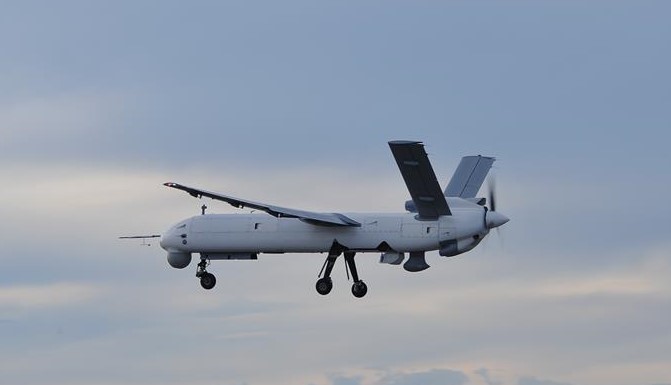
SHAH ALAM: Is it the Turkish Anka UAS? The Dewan Rakyat was told today that the RMAF is expected to acquire the Medium Altitude Long Endurance (MALE) Unmanned Aerial System in 2025 with operations commencing in 2026. Bernama reported that the Deputy Defence Minister Datuk Seri Ikmal Hisham Abdul Aziz saying that
the Ministry has completed all tender evaluation processes to acquire MALE UAS for use by the Royal Malaysian Air Force (RMAF) to strengthen Malaysia’s dominance of air domain.
He said the ministry’s procurement board had certified the selected tenderers and submitted them to the Ministry of Finance on July 7 and the final decision would be known this month.
For the maintenance ecosystem, it will be implemented after the expiry of the warranty period from the Original Equipment Manufacturer (OEM) based on the maintenance concept that will be determined by RMAF.
“The procurement of weaponry including Electronic Warfare (EW) for these assets will be carried out in the second and third procurement phases in the 13th Malaysia Plan (13MP) and 16MP,“ he said in response to a question by Ahmad Tarmizi Sulaiman (PAS-Sik) regarding the status of the tender, procurement, maintenance for MALE UAS aircraft for RMAF use during the question and answer session in the Dewan Rakyat today.
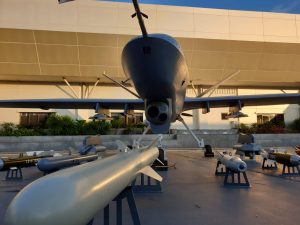
As from the story, we know the Deputy Defence Minister did not name the UASs selected but instead had submitted the list to the Finance Ministry, which will make the final decision. It remained unclear when the contract will be signed. I was told much earlier by industry sources that the Turkish Aerospace Industries (TAI) Anka and the Leonardo Falco Evo had been down selected for final consideration from a number of bidders which include the AVIC Wing Loong UAS. They had even gone to Turkey earlier this year to conduct a physical evaluation of the Anka. This was separate from the official visit of the PM last month.
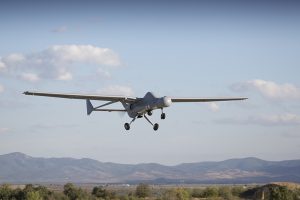
But from the bold paragraph above in the story, one may assume that there was time for a final lobbying effort from all bidders as the Finance Ministry hold the final decision on the contract. And as the contract is going to be signed the latest by late 2023 (with delivery commencing in 2025), they got a long time to do it. It must be noted that ten companies responded to a RFI on MALE UAS put forward in 2019. As they say, its not over until the fat lady sings. Especially with a general election to be held by mid of next year or before the contract signing.
— Malaysian Defence
If you like this post, buy me an espresso. Paypal Payment

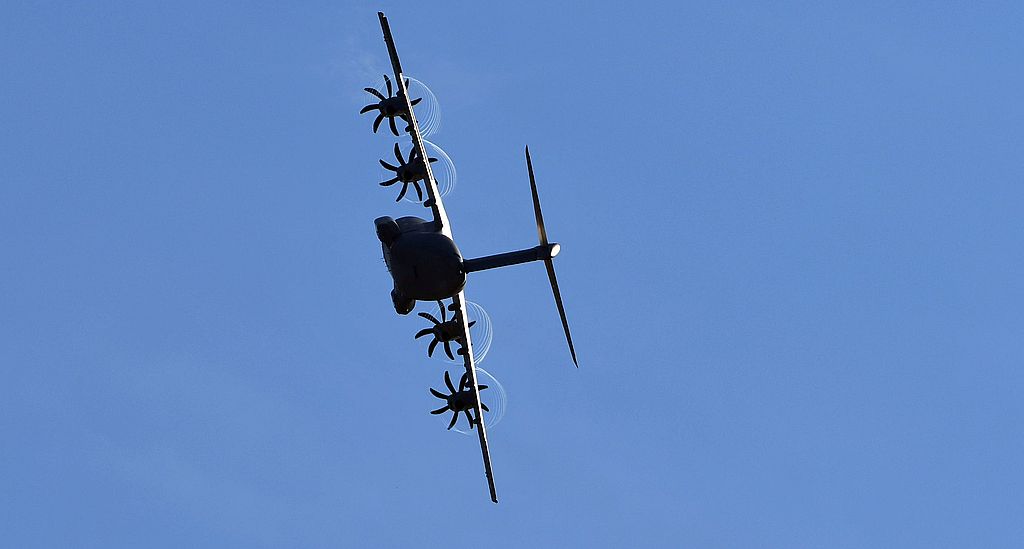
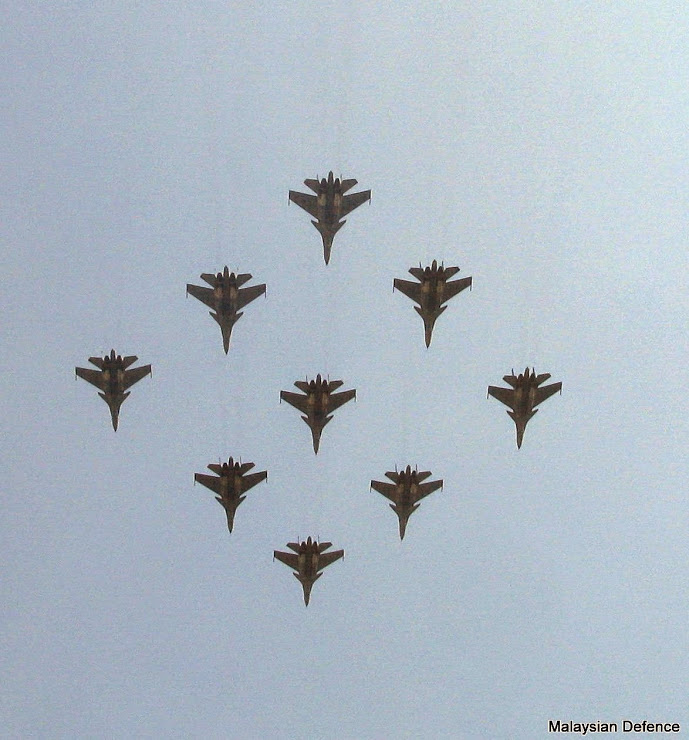
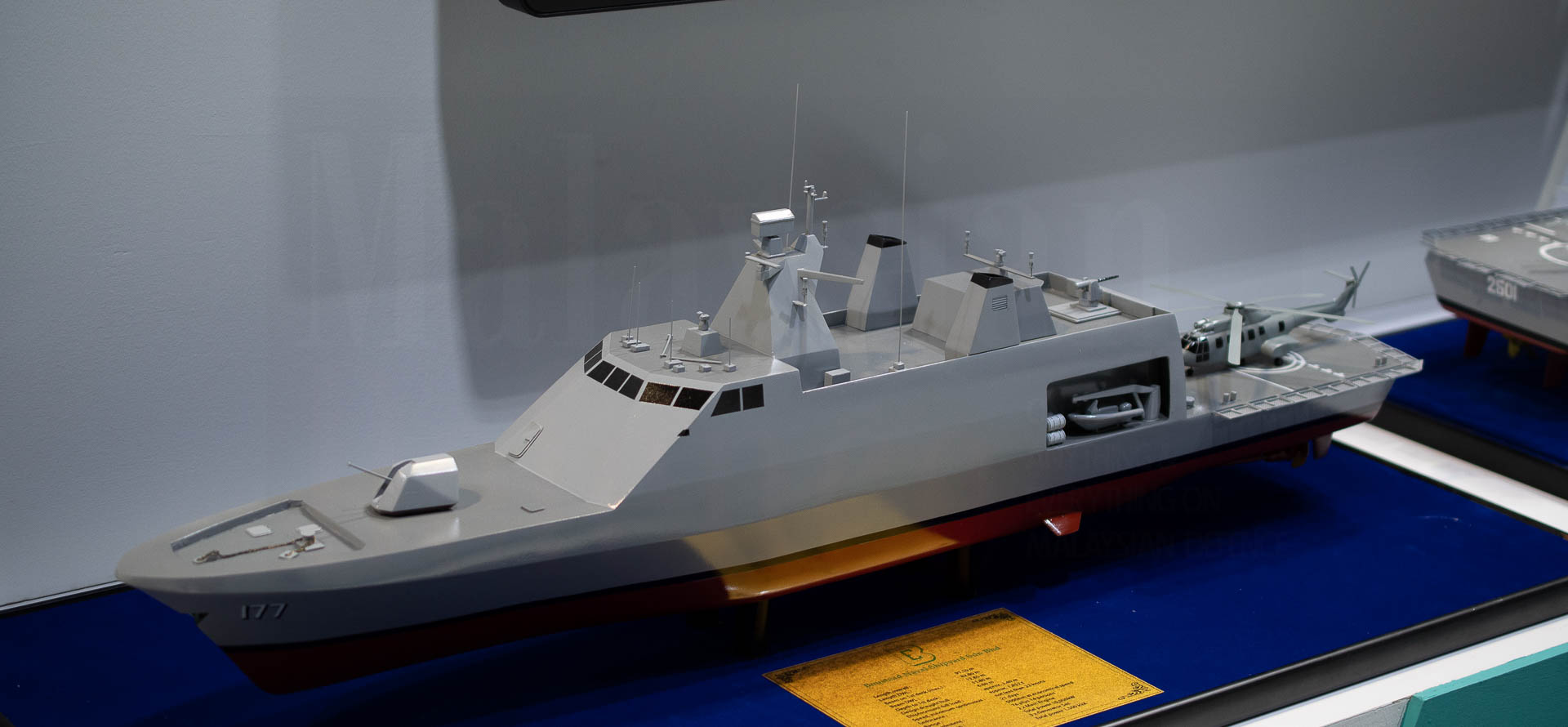
Given the political angle I would extremely surprised if Anka wasn’t selected. It also happens to be a sound ISR platform. What I’m curious however is how it compares to its competitors with regards to the CPFH and number of maintenance hours needed for every flight; plus the number of hours the airframe and other components have.
There is a report that 3 systems are to be acquired. How many drones are in a system?
No lah, only one system, with 3 UAVs
Tom Tom,
The actual platform [whether called a “drone, “UAV” or previously;”RPV”] when included with the ground gear constitutes a “UAS”.
Why aren’t the air force consider the much more successful bayraktar UAV?
AFAIK it wasn’t offered for the tender. Likely it was a deal between the two Turkish companies from going against each other in the same competition.
Anka-S is larger than TB-2 (which is technically a tactical UAV/UCAV) whilst the Akinci is a large HALE UAV
There’s no issues about getting both Anka and Bayraktar as they fill different purpose, although a better alternative is to come up with armed version of Aludra UAV
The consortium that made Aludra has long shut down…that’s the reason there is no more version of the Aludra. Deftech tried to do it on their own but so far Mindef has not bite. Buying two type of UAS is a wet dream for all agents, a bad idea really for our cash strapped forces
I reckon the Anka should be the top choice rather than the Falco. If you believe Wikipedia, the Falco cannot be armed. At least with the Anka, there is the option of using it as a UCAV if the need ever arises, plus the option of progressing into HALE drones from TAI eventually. Turkish smart munitions from Roketsan are battle proven.
Alex,
The requirement is for a ISR platform. The TB2 is a armed UAS and I wouldn’t say it’s more “successful” merely that more have been sold compared to Anka and even before the Ukraine war it was making the news. At the moment we have a pressing need for a ISR UAS to watch over our maritime domain; not an armed UAS.
Bayraktar is practically a TUAV, a much cheaper one at that compared to Anka. Buying Anka and hoping it will be jack of all trades for our surveillance needs would be more wasteful, especially if one crashed
Philippines bought 2 different version of Hermes, one for long range maritime surveillance and the other for more terrestrial/coastal need for COIN.
In Malaysian context, a TUAV would be useful in ESSZone, a much cheaper option than to station a MSA when they could be used to monitor SCS and Malacca Strait
I’m interested in the C3 angle. If a RMAF UAS via ESM detects a contact “x” NM away from Layang Layang what mechanisms will be in place for the info to be shared with the nearest RMN or MMEA ship and how long will the process take? If a RMN ship requires a RMAF UAS to take a closer look at a contact how will the request be passed on? Will the RMAF UAS squadron have a number of RMN people attached?
Jointness is everything; as is doing away with cumbersome bureaucratic arrangements. In years to come as we mature as a UAS operator and steadily require certain tertiary skills we’d be better off raising a Joint UAS Command like what the SAF has done.
Dundun – “Buying Anka and hoping it will be jack of all trades for our surveillance needs would be more wasteful”
I have no idea about the “wasteful” part but to serve as a dedicated ISR platform; some range and endurance is needed as well as the ability to carry ESM; this is what Anka and other platforms in the same category; were designed and intended to do and why we looked closely at it. It is also not intended to be used as a [Jack of all trades] but in specific operational circumstances befitting the capabilities it offers.
For closer inshore work; a smaller lower flying platform is needed [as you alluded to]; something like Scaneagle. Ultimately it’s not only the platform per see [like planes; UASs break down; require maintenance and can be lost due to technical or other reasons] but having them in some numbers and employing them in the right manner [the C3]. They are Also not intended to replace but supplement manned platforms although it will be a common occurrence when zones are created deconflicting the employment of manned and unmanned assets to avoid overlaps.
I would love to see three squadrons of long range/tactical UAS in service as well but I am well aware that the government is huffing and puffing to buy even one system with three aircraft
Fully agreed Marhalim. A number of MALE UAS squadrons operated by a Joint UAS Command; various RMN ships having an integral UAS to supplement the ship’s sensors and embarked helo [if any] and large numbers of inexpensive commercial UASs to the army’s infantry, armoured and arty units.
As I use to say years ago; various non state groups had/have a more extensive UAS capability than the MAF.
If indeed true it seems they want to have an option of either branded (expensive) one or a lesser branded (cheaper) one so it would give a bit more direction towards their choices. That’s brilliant actually; if they have the money/budget, select branded Leonardo bid. If no money, go for less branded TAI bid. The downselection does pique my interest here.
Leonardo’s bid is compelling as I see they could grab the chance to do a multi package deal for Falco MALE with M346 LCA/LIFT, and Selex RAT31 Radar, and ATR72 MPA, and AW139/149 medium chopper. Basically locking in TUDM, TLDM, and TDM into their ecosystem. Plus Leonardo had been partial to local TOT developments, and they also had done barter deals trading before so such an offer would be very tempting.
TAI’s bid otoh would be the far much cheaper option but with better future potential. The Anka for sale is S Block and it has an armed variant so if we in future going into the UCAV business, our step up from unarmed Anka UAS to Cirit/MAM armed Anka UCAV would be easier. Another peculiar thing, the engine is adapted from Merc Benz turbodiesel unit so fuel cost would be cheaper by not using avgas plus servicing & parts would not be too complicated. Turkey (or Turkiye?) right now is starving of foreign currency with the weak lira, much like us, so I wonder how will we pay for them cuz we too are just as in a bad shape as them, ringgit-wise, so we will certainly look to push barters and offsets to reduce the cash payments.
In either case, if payments are to be made upon initial deliveries (aka 2025) that will be the problem of our next coming Government. So it could still be something agreed by this one and abrogated by the next, who knows. I guess time will tell.
PS I’m still hoping for handful of free FMS used Predators from Uncle Biden.
Nothing from the US in the case of high end UAS, thanks to Mat Sabu
As the author mentions in “The Kill Chain” [Brose] Predators are notoriously expensive to sustain. It seems they have a prohibitively high CPFH.
There is an other Malaysian company which came up with a UAS. Can’t remember the company’s name but they were at DSA and they’ve also come up with a ESM. Been awarded a number of MINDEF cyber security contracts.
Hopefully the 3 Anka are just a start to get experience before progressing to the Aksungur. Maybe that is the plan….
The first MALE UAV is intended solely for ISR. The Deputy Minister stated the UAV’s will get EW capabilities in future RMK. No mention of weaponising the UAVs. I would guess endurance would be a top criteria since the UAV’s will be based in Labuan and intended to operate in SCS and ESSCOM area – Anka seem to have better endurance than the Falco. Wonder if they will use the UAVs primarily in the (I)Intelligence role, or the (S)Surveillance, or (R)Reconnaissance roles, given the limited numbers. Don’t think 3 drones can provide 24/7 surveillance.
Unrelated, seems the Tejas Mk1 does not meet the IAF’s requirements. A lot of the Mk1A enhanced capabilities would be related to Russian and Israel equipment and weapons (including the AESA radar). The proposed Mk1A production numbers seem incapable of supporting exports unless IAF gives up some of its allocation (3 in 2024, 16 annually from 2025 with the IAF ordering 73). Meaning if Malaysia chose the Tejas and decided to proceed with a second batch, don’t think India can ramp up production of the Mk1A. And there is a bigger Mk2 in the pipeline.
Seems like the Tejas for the LCA might be a risky decision.
https://eurasiantimes.com/indian-air-force-begins-testing-its-new-heres-how-the-mk1a-fighter/
Tom Tom,
You seriously think we have that level of long term planning; on the part of the politicians. We have a history of shifting priorities with little or no continuity; driven by the politics of the day.
Mindmatics? It was also the company that beat Sapura to the Army radio section tender. Interestingly although it also offer a VTOL UAV, it did not win the BSPP tender for such air vehicle. Another Putrajaya company Global Das Sdn Bhd won this tender. The company did not show any UAS on its website.
Hurjet is even worse
Kel – “The first MALE UAV is intended solely for ISR.”
That has long been made clear and understood – a requirement for a ISR platform.
Kel – “No mention of weaponising the UAVs”
Because there is no such requirement to begin with….
Kel – “I would guess endurance would be a top criteria”
Entrance, range, cost of spares; CPFH, number of post flight maintenance hours, etc.
Kel – “Seems like the Tejas for the LCA might be a risky decision”
We’ve kind of worked that out already but all things being equal it isn’t a bad choice from a platform perspective; merely that the F/A-50 is more mature and has a wider user base [we’d be the first export customer – some one pointed out the 400M but we weren’t the first customer per see]. As it stands both types require some level of integration to meet the RMAF’s requirements.
kel – “The Deputy Minister stated the UAV’s will get EW capabilities in future RMK”
That’s a bummer given that it only entails a ESM payload – silly having a MALE UAS enter service if it can’t detect emissions because of a lack of ESM. Saab reported in 2015/16 that it sold us ESM payloads for UASs – no idea what it was fitted to.
Kel – “Wonder if they will use the UAVs primarily in the (I)Intelligence role, or the (S)Surveillance, or (R)Reconnaissance roles”
What else will they use it for then? Anka from Day One was designed and intended for ISR and that’s precisely why it was offered to us. The TB2 in contrast was not offered because there is no requirement for a armed UAS. There is a thin line between “surveillance” and “recon”.
Kel – “Don’t think 3 drones can provide 24/7 surveillance.”
It can with good maintenance/engineering support but the question is for how long can it be sustained. Like planes; UASs break down; they require regular checks and maintenance and their airframes only have “x” amount of hours and they have components which breakdown and require maintenance.
My concern is on other issues which I’ve alluded to; how we employ it: the C3, level of Jointness and how well we integrate its employment with other assets. On top of that how long will it take for a 2nd batch?
When will the the LCS be truly commenced their construction again? The situation that’s currently unfolding on the South China Sea is not helping this region at all. If war were to happen, our armed forces especially the navy will be helpless against the might of China’s PLAN.
Does we really need that long to decide buying just 3 units of UAV? Are we really that cash-strapped..Plan to buy only 3 units but made the fuss like buying more than that..What a joke considering Indonesia and Thailand already developing their homegrown Male UAV
Akmal – ” If war were to happen, our armed forces especially the navy will be helpless against the might of China’s PLAN”
Sorry to break it to you but even if the RMN had 15 LCSs, 25 LMSs and 8 SSKs; it would still not sufficient to militarily deal with the PLAN. The PLAN has a numerical superiority; qualitative superiority [various tertiary skills we don’t have; such as the ability to conduct and maintain complex multi domain ops; the ability to conduct EW bad cyber warfare, etc] and is far better resourced – even the likes of the USN and JSDMF would struggle.
Some threats we can handle and some we can’t; unsurprising given the size of the economy; how much we allocate to defence; how the MAF is structured and other things – that’s the reality. As it stands we would struggle against countries far less capable compared to China. In the event of troubles with China we would be part of a coalition but would play a minor role on the periphery because of our lack of capabilities.
Yes, which is why the question was, whether its primarily an Intelligence, OR Surveillance, OR, Reconnaissance platform. Each has different ops tempo. You use it as a surveillance platform, with just 3 birds, you’ll run down the squadron in no time regardless of how well its maintained.
To monitor 24/7, or to go up at specific moments, such as being asked to collect information, in response to specific events (e.g. movements, shadow oil and gas exploration vessels), in support of specific operations (by the Navy in SCS, Army in ESSCOM), or just to see see look look at what people are doing in SCS and ESSCOM from time to time with the objective of collecting intel, OR monitoring 24/7 for intrusions, illegal fishing, smuggling, etc.
Obviously if there is 12 UAVs, we can put 2 up at any given time to do all ISR roles 24/7. But there is only 3. But, its the first MALE UAV, 3 is good enough to get used to operating a vehicle that can stay flying for 20+ hours.
Agree, the concern is on batch 2. Will this be one of those where after years of developing the know-how, we loose the capability because no new money to buy newer, better assets to replace or expand the capabilities. More worryingly, the timelines for any future UAV purchases clashes with the MRCA replacement and/or LCA Batch 2. While the LCS will remain a funding magnet until 2030.
kel – ” whether its primarily an Intelligence, OR Surveillance, OR, Reconnaissance platform”
Minor distinction between ‘intel’, ‘surveillance’ and ‘reconnaissance’ – a thin line. You can perform ‘reconnaissance’ and what you gain is ‘intel’. You can also conduct ‘surveillance’ from well within your air domain but might have to venture out to perform ‘intel’ or reconnaissance’.
Kel – ” you’ll run down the squadron in no time regardless of how well its maintained.”
Airframes will accumulate hours fast irrespective of whether being called to perform ”intel” or deliver baby milk on a regular sustained basis with few airframes but maintaining that ops tempo is possible with sound maintenance/engineering support; the question is for how long can such an effort be maintained…
kel – ”in support of specific operations (by the Navy in SCS, Army in ESSCOM),”
This was discussed in a previous post. Closer inshore work will be performed by smaller shorter range stuff [i.e. Scaneagles] which when deployed under ESSCOM will be under the Joint HQ – we are not getting a MALE to be operated exclusively in ESSCOM or to detect illegal immigrants. A MALE system like Anka will be used further afield along the edge or along the periphery of our maritime boundary monitoring anything of interest or concern; whether a PLAN frigate; foreign trawlers; etc.
The question [as I alluded to in a previous post here and in previous discussions] is the C3 arrangement. Jointness is still very much an issue in the MAF [as it is in most militaries]; the RMAF UAS will have to be able to operate and ”talk” to other RMAF assets and also to RMN and MMEA assets; the capability must not be hogged by the RMAF.
Until we have a proper Joint C3 in place with minimal inter service rivalry and bureaucratic obstacles; we won’t be able to effectively deploy the UAS. I the past the RMAF announced that it would seek RMN input in determining which MPA is selected; that’s a good start. Ideally MPAs would also have some RMN crews.
For a normal operation tempo, for 1 plane on the sky(regardless whether it’s manned or otherwise) , one will be on maintenance and one is on standby. If the UAS is only stationed at Labuan to patrol its AOR alone, it would be sufficient for the time being as the task of patrolling SCS is also done by the CN-235 and King Air MSA.
For context, Philippines only had 3 MALE UAS (for a total of 9 UAV tho one crashed) to patrol the whole of Philippines maritime area while Portugal uses one UAS to patrol the Mediterranean to detect incoming refugee boats
What we also need is a tactical UAS that is much more mobile and can be deployed to patrol other area at moment notice, something that Aludra did before for ESSZone and Malaysia/Thailand or Malaysia/Indonesis border. Right now the task is done on ad hoc basis using DJI drones but we need something that could so for hours on end.
Dundun – “What we also need is a tactical UAS that is much more mobile and can be deployed to patrol”
Indeed. Something smaller and with less range and endurance compared to a MAL; for closer inshore work. This is a role the RMN’s Scaneagles are performing although I would rather have them on ships as an organic component.
Again, if the drone goes up only when called (i.e. on a specific mission), RMAF would have established communications with the requesting force (e.g., Navy or Army) since the objective of the flight is to capture tactical information for the requesting force. If the RMAF if flying intel gathering missions, it is likely RMAF is collecting strategic information for use by all forces – collects, process then shares separately with the other forces after the fact. The grey line obviously exists, once in the air anything it sees qualifies as I,S, and R. Its how it will be used, which will determine how often it flies. Isn’t the whole thing just like how the RMAF is able to operate their F-18s for so long – because they don’t fly them as often as other operators. If RMAF flew the F-18s like the Americans, the F-18s would not be airworthy many years ago regardless of how well maintained they are. How to reach the flight hours depends on its ops tempo, which in turn depends on how it is intended to be used. I highly doubt RMAF intends the drones to be chasing smugglers, illegal fisherman, illegal immigrants, and the like – which requires constant surveillance. If it goes up on a specific intel gathering mission and detects illegal fisherman and smugglers, then it detected illegal fisherman and smugglers – pass the information real-time if can or after the fact. But it wasn’t send airborne to find illegal fisherman and smugglers. Similarly if it goes up on surveillance mission to find illegal fisherman and smugglers, but detects an unknown submarine lurking near the surface, then it detected a submarine. But it wasn’t send airborne to find the submarine.
kel – ”Again, if the drone goes up only when called (i.e. on a specific mission), RMAF would have established communications with the requesting force (e.g., Navy or Army)”
You make it sound so clear cut and simple; it isn’t. I didn’t mention C3, Jointness and bureaucratic obstacles because I got up from the wrong side of bed this morning or because I have nothing else to write about. ”Again”, eventhough you may be unaware; Jointness is still an issue. Inter service rivalry, parochialism and other things is still an issue.
kel – ”the grey line obviously exists, once in the air anything it sees qualifies as I,S, and R. Its how it will be used, which will determine how often it flies.”
You brought up the question of whether the UAS would be used for ”intel’ or ”recon” – in turn I pointed out that there’s a fine line dividing the two… – one can be conducting one but still be conducting the other or not. There is also no set rule determining that something will fly more hours if tasked with a particular tasking… Depends on how the said asset is employed.
Kel – ”I highly doubt RMAF intends the drones to be chasing smugglers, illegal fisherman, illegal immigrants, and the like – which requires constant surveillance.”
As was clearly pointed out; MALES are intended to perform ISR along the edge of the maritime boundary. Smaller UASs are used more for closer inshore work; in circumstances which don’t call for a larger system with more legs and endurance. It’s plainly obvious that the primary purpose of a MALE UAS would not be to detect illegal immigrants or smugglers for the simple reason that it’s an overkill and that illegal immigrants or smugglers will be encountered along the littorals in areas where we share a maritime boundary; not in the EEZ or in national waters which will be the primary operating area of a MALE UAS…
Kel – ”But it wasn’t send airborne to find the submarine.”
I have no idea what you’re driving at and I’m not eager to find out but assets have specific taskings and if they come across things which are a matter of interest but would not be normally encountered in their set tasking obviously they would act on it.
P.S. Jointness is still an issue [each service has a different way of doing things – can all RMAF aircraft talk to all RMN ships or vice versa; if a RMN ship needed the support of a RMAF MPA how will the request be passed and how long will it take? Don’t assume all this has been worked out.] Inter service rivalry, parochialism and other things is still an issue; especially when funds are tight and each service is in competition with the other for funding. Even the U.S. which got into the jointness business way way before us still has issues; a times SF units from one service couldn’t even communicate by SATCOM with a SF unit from another service because it didn’t have the SATCOM number and C3 is an issue especially when there are different Task Forces in command of different units.
If the armed services themselves have issues operating seamlessly with one another; what about with the MMEA? Can every MMEA OPV communicate with RMAF aircraft? If a RMAF UAS detects a contact and the nearest friendly asset id a MMEA OPVs; how will the info be shared and how long will it take?
kel – ”t is likely RMAF is collecting strategic information for use by all forces – collects, process then shares separately with the other forces after the fact.”
What if it’s time sensitive and the info has to be shared as fast as possible with another command or service so it can be acted on as fast as possible – how many layers will it have to go through and how fast will it take? Even within ESSCOM which is a peacetime command and has been there for almost a decade; jointness is still an issue.
OK, then how often do you want or think the drones will fly? Very simple question, no need it depends. As usual I will give my context. The MALE is a strategic asset. It won’t be tasked like what Portugal uses its MALE drone for, not as what was described for Philippines, to patrol entire maritime boundary. I interpret the drone use, again my context, as an intelligence gathering platform that will do the S and R components when needed. It goes up to look for something specific whether a fleet, ship, exercise, in support of adjacent forces or allied forces, or in response to a specific event. Its not intended to patrol and provide 24/7 situational awareness. It can be tasked for specific missions when requested by other branches like the Navy and Army. Its primary objective, as a first of its kind asset for Malaysia, is to allow pilots and the organisation to operate a long endurance plane. Its secondary objective, is collect intelligence for strategic purposes – basically to see if China is doing more magic in SCS, or whether Sulu marauders is attempting to raid again. So I don’t see if flying as often as some might think it will. I could be wrong. That would influence the C3I structure. Whether real time communications is required, or most of the intelligence it gathers is used after the fact so it can at the moment, live with delayed response until the armed forces understand how to integrate long endurance platforms into the force structure. My context is not complicated. It’s how I would use a 1 squadron of 3 MALE drones in a small budget airforce, where the chances of 3 additional drones to allow it to provide 24/7 situational awareness in a joint command is very low given the air force has more urgent priorities like trying to get 36 LCA and setup a second 18 plane heavy combat aircraft (i.e. the F18). So the priority is maximum sustenance and longevity of the asset. Get the other assets than gradually find what fits Malaysia, and learn from other countries. Its for too early to think of a comprehensive joint command with real time 24/7 quick response structure.
So to summarise in another way, 3 drones, but only 1 needs to be airborne 2 or 3 days a week (tasked for specific mission), vs 1 drone needs to be airborne all the time (to provide 24/7 surveillance) which will clock more flight hours?